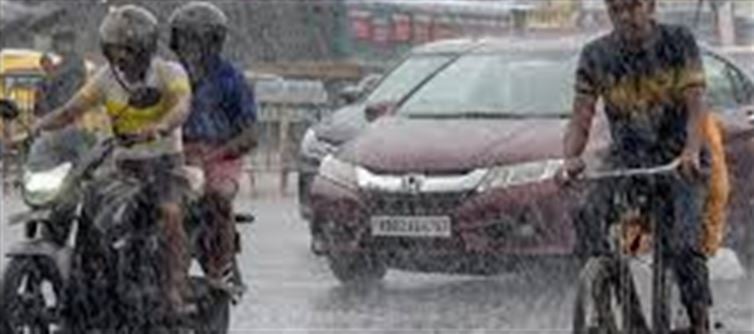
Currently 81° · Cloudy
Tamil Nadu, India
Today
90°
76°
Cloudy with a little rain this afternoon
Friday
90°
76°
Mostly cloudy
Saturday
89°
76°
A shower in spots in the morning; otherwise, cloudy
Sunday
89°
77°
Cloudy
Monday
90°
76°
Still cloudy; breezy in the afternoon
Tuesday
91°
76°
Rather cloudy
Wednesday
90°
79°
Cloudy with periods of rain in the afternoon
Currently 82° · Hazy sunshine
Maharashtra, India
Today
89°
72°
Humid with hazy sun
Friday
87°
72°
Mostly cloudy with a thunderstorm in the afternoon
Saturday
84°
72°
Cloudy and humid; a thunderstorm in the afternoon
Sunday
85°
72°
A touch of morning rain; otherwise, mostly cloudy and humid
Monday
85°
72°
Humid with clouds and sun; a passing afternoon shower or two
Tuesday
86°
65°
Mostly cloudy
Wednesday
84°
71°
Rather cloudy; a morning shower in spots followed by a little rain in the afternoon
Key Highlights
· The IMD has flagged the possibility of heavy to very heavy rainfall across several districts in southern india — especially in tamil Nadu, and parts of maharashtra — over the next few days.
· At the same time, hilly states in northern India are expected to receive rain and snowfall, owing to western disturbances.
· The weather scenario brings multiple risks: water-logging, flash floods, landslides (in hilly terrain), and disruption in transport and daily life.
What to Expect in tamil Nadu & Maharashtra
· In tamil Nadu: Cloudy skies will continue, with chances of showers especially in the afternoons. The forecast shows moderate rain with some heavy bursts. The region remains under heavy rainfall watch.
· In Maharashtra: The western and coastal belts will see humid weather, cloud cover, and thunderstorms with afternoon showers likely. Areas in the ghats & coastal stretch may be particularly vulnerable to heightened rainfall.
· In both states, low-lying areas, coastal zones, and hill-adjacent terrains must stay alert. Flooding or water‐logging can occur even with moderate rainfall if the drains/terrain are saturated.
What This Means for Hilly & Northern Regions
· In states like Himachal Pradesh and Uttarakhand, the forecast points to light to moderate rain and snowfall. This can lead to sudden drops in temperature and possible travel disruption in high‐altitude zones.
· Residents and travellers in hill stations/remote terrains should keep an eye on weather updates — roads may become slippery, and snow could block passes.
Safety & Preparedness Tips
· Avoid non‐essential travel in regions under alert—especially during heavy downpour times or in high terrain.
· Monitor local weather bulletins and follow advisories issued by the IMD and local authorities.
· For tamil Nadu & Maharashtra: Be cautious of water-logging in urban areas, secure loose objects (strong winds can accompany storms), and stay away from river banks/coastal waters during rough weather.
· For hilly regions: Ensure proper gear for cold weather, keep track of mountain road conditions, and avoid risky slopes if snow or rain is ongoing.
· Agriculture & infrastructure: Drain excess water if possible, ensure proper support for crops/horticulture, and safeguard harvested produce (as per IMD guidance).
Why This Weather Pattern?
· The heavy rains in the south are driven by a well-marked low-pressure area / cyclonic circulation over the Bay of bengal region, which is enhancing rainfall along the tamil coast and adjoining zones.
· In the north, a western disturbance (and associated upper air trough) is bringing in rain and snow, which is common during this season.
Final Word
As we move through the next few days, conditions merit caution: parts of tamil Nadu and maharashtra must brace for heavy rain and its consequences, while the hilly states need to gear up for colder, snow‐prone weather. Staying updated, planning ahead, and taking timely preventive measures will help minimise any disruption or risk.
Disclaimer:
The views and opinions expressed in this article are those of the author and do not necessarily reflect the official policy or position of any agency, organization, employer, or company. All information provided is for general informational purposes only. While every effort has been made to ensure accuracy, we make no representations or warranties of any kind, express or implied, about the completeness, reliability, or suitability of the information contained herein. Readers are advised to verify facts and seek professional advice where necessary. Any reliance placed on such information is strictly at the reader’s own risk.




 click and follow Indiaherald WhatsApp channel
click and follow Indiaherald WhatsApp channel